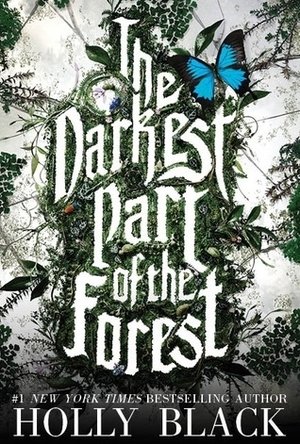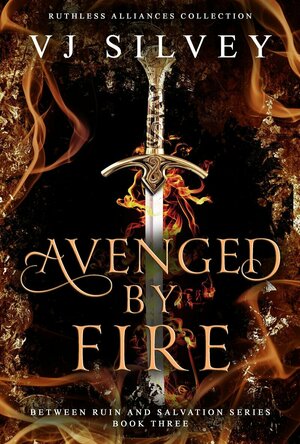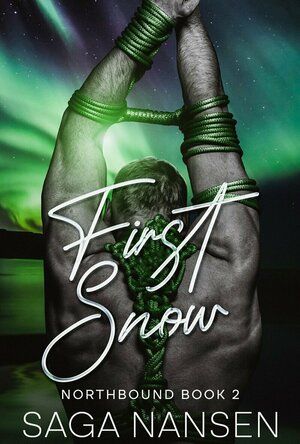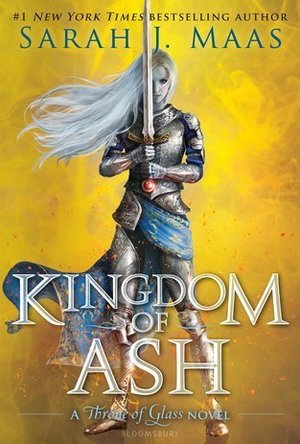Search
Kaysee Hood (83 KP) rated The Darkest Part of the Forest in Books
Jul 14, 2018
The Knight is Young
Holly Black sticks with folklore for Faeries and still is able to make her own twist about a town called Fairfold where the townspeople coexist cautiously with the Fae. In this town there is a boy who is a changeling pretending to be human, a boy who wishes for love out of fairy tales, a girl who desires to be more than ordinary, and a horned prince in a glass coffin all of who are very important to the story because without one it is possible none of which is happening would be happening.
Ben and Hazel are on the hunt for their prince who's awoken from the glass coffin, but what is the cost of finding him when his freedom is the start of the town pointing fingers at Jack? Will these once duo in hunting the wild faeries drift further apart? Will Hazel be able to decide who she wants to be? Can she decide which side she must be on? Or will be betray those she loves, those who have confessed to her what they hold for her to keep her place? Will Ben betray his sister for the horned prince? Will he allow his jealousy for her to overcome him to ensure he is able to finally have what he wants? Will he ruin his friendship for all this?
And is anyone safe in town?
The flow of this book was amazing. We're introduced to our key characters, minor ones, and even less important ones within the first few pages or throughout without any of the development taking from the story or plot. It takes off into the action without pause and even though one would think not skipping a beat would be bad to convey the story it works here as there is so much occurring to piece the puzzles pieces together. The relationship between brother and sister despite what is between them is wonderful as it shows you can care for someone no matter what you believe within your own mind. Their interactions are what makes TDPOTF so great. I believe without Hazel's and Ben's siblinghood this book would have not worked.
Ben and Hazel are on the hunt for their prince who's awoken from the glass coffin, but what is the cost of finding him when his freedom is the start of the town pointing fingers at Jack? Will these once duo in hunting the wild faeries drift further apart? Will Hazel be able to decide who she wants to be? Can she decide which side she must be on? Or will be betray those she loves, those who have confessed to her what they hold for her to keep her place? Will Ben betray his sister for the horned prince? Will he allow his jealousy for her to overcome him to ensure he is able to finally have what he wants? Will he ruin his friendship for all this?
And is anyone safe in town?
The flow of this book was amazing. We're introduced to our key characters, minor ones, and even less important ones within the first few pages or throughout without any of the development taking from the story or plot. It takes off into the action without pause and even though one would think not skipping a beat would be bad to convey the story it works here as there is so much occurring to piece the puzzles pieces together. The relationship between brother and sister despite what is between them is wonderful as it shows you can care for someone no matter what you believe within your own mind. Their interactions are what makes TDPOTF so great. I believe without Hazel's and Ben's siblinghood this book would have not worked.
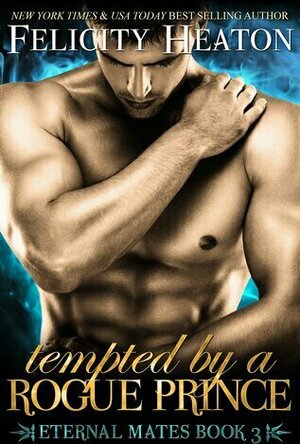
Tempted by a Rogue Prince (Eternal Mates #3)
Book
Dark elf prince Vail despises witches and will kill any who cross his path… So when fate...
Paranormal Romance
Merissa (13419 KP) rated Avenged by Fire (Between Ruin and Salvation #3) in Books
Apr 12, 2023
AVENGED BY FIRE is the third book in the Between Ruin and Salvation series and you must read these books in order, as one follows on from the other.
I won't rehash the storyline - you've got the blurb for that. Suffice it to say it is full-on action once again. Now Ava has beaten Alpha Thomas, she has set her sights on the Council. After all, they do have her parents, child, and mother-in-law! Together with Makaii, they set off around America to form alliances in a bid to take them down. While doing that, the full horror of what the council is doing comes to light - and there is no way that Protector Ava or her associates are going to stand for that!!!
Ava is just as kick-ass as in the other stories and I am finally warming up to Makaii. In fact, I actually felt for him in this book as he tries his best to go against his instincts to wrap Ava up in cotton wool to keep her safe. I may not have been that keen on him but I love their relationship. There are mistakes being made, give and take between two very strong individuals. They haven't just immediately fallen into this perfect life.
Ava also gets to meet more of her family - together with a Fae Prince who is a bit of a jerk, if I'm honest. Mind you, Ava does manage to bring him into line in spectacular fashion. That may be my favourite scene out of the whole book.
Oh, and Bailey sniffs out her mate but avoids him like the plague. I know which one I want for her but I will have to wait and see.
One helluva cliffhanger wraps up one helluva book! I really can't wait for the conclusion and to see Ava in action again. HIGHLY recommended by me.
** same worded review will appear elsewhere **
* A copy of this book was provided to me with no requirements for a review. I voluntarily read this book; the comments here are my honest opinion. *
Merissa
Archaeolibrarian - I Dig Good Books!
Apr 12, 2023
I won't rehash the storyline - you've got the blurb for that. Suffice it to say it is full-on action once again. Now Ava has beaten Alpha Thomas, she has set her sights on the Council. After all, they do have her parents, child, and mother-in-law! Together with Makaii, they set off around America to form alliances in a bid to take them down. While doing that, the full horror of what the council is doing comes to light - and there is no way that Protector Ava or her associates are going to stand for that!!!
Ava is just as kick-ass as in the other stories and I am finally warming up to Makaii. In fact, I actually felt for him in this book as he tries his best to go against his instincts to wrap Ava up in cotton wool to keep her safe. I may not have been that keen on him but I love their relationship. There are mistakes being made, give and take between two very strong individuals. They haven't just immediately fallen into this perfect life.
Ava also gets to meet more of her family - together with a Fae Prince who is a bit of a jerk, if I'm honest. Mind you, Ava does manage to bring him into line in spectacular fashion. That may be my favourite scene out of the whole book.
Oh, and Bailey sniffs out her mate but avoids him like the plague. I know which one I want for her but I will have to wait and see.
One helluva cliffhanger wraps up one helluva book! I really can't wait for the conclusion and to see Ava in action again. HIGHLY recommended by me.
** same worded review will appear elsewhere **
* A copy of this book was provided to me with no requirements for a review. I voluntarily read this book; the comments here are my honest opinion. *
Merissa
Archaeolibrarian - I Dig Good Books!
Apr 12, 2023
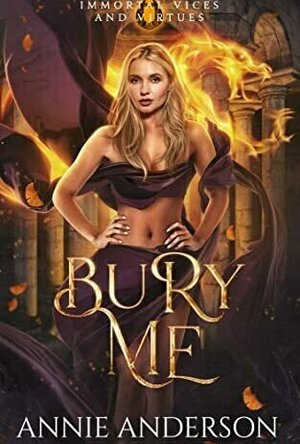
Bury Me (Immortal Vices and Virtues: Her Monstrous Mates #6)
Book
The world ended the night I was born. Coincidence? I think not. Stuck living in the catacombs...
Reverse Harem Steamy Paranormal Romance Why Choose?
Debbiereadsbook (1557 KP) rated First Snow (Northbound #2) in Books
Jan 9, 2024
If Arttu has to get on his knees for a murderer, so be it.
Independent reviewer for Archaeolibrarian, I was gifted my copy of this book.
This is book 2 in the Northbound series, but it can be read as a stand alone. There is a minor on-going story arc that can be quickly picked, with most being recapped in this book.
I loved book one, Midnight Sun, and while I really REALLY enjoyed this one, it doesn't quite meet up to book one's grab-you-and-not-let-go kinda vibe, and it pains me, deeply, to say so!
I liked Arttu, I really did. He wants to find out what happened to his friend in London and if he has to get on his knees for a murderer, so be it. But Jareth is so much than the skin he wears. Yes, he has killed beings and people that break the rules, but never in cold blood. He is Half-Fae, a Lord of his people, and as such wears a glamour most of the time. When Arttu finally sees Jareth true form, he isn't quite sure what he is seeing, but he knows he needs Jareth, in any form.
Jareth, not so much. I don't know why, but my overwhelming feeling about Jareth is "I don't like you!" That said, I did like how drawn he was to Arttu. He knows Arttu is keeping secrets, he is a master at that himself, but still. He wants Arttu in a way he never wanted anyone before.
I liked that Jamie and Finn pop up (from book one) I liked the supporting cast, both the support for Arttu and Jareth is great in very different ways.
I'm still not sure quite what happened with Lord Briar and his wife though!
And I thank you, Saga Nansen, for the glossary at the end!! I found in immensely helpful!
I'm sorry I couldn't love it as much as Midnight Sun, but I did thoroughly enjoy it.
4 very VERY good stars
*same worded review will appear elsewhere
This is book 2 in the Northbound series, but it can be read as a stand alone. There is a minor on-going story arc that can be quickly picked, with most being recapped in this book.
I loved book one, Midnight Sun, and while I really REALLY enjoyed this one, it doesn't quite meet up to book one's grab-you-and-not-let-go kinda vibe, and it pains me, deeply, to say so!
I liked Arttu, I really did. He wants to find out what happened to his friend in London and if he has to get on his knees for a murderer, so be it. But Jareth is so much than the skin he wears. Yes, he has killed beings and people that break the rules, but never in cold blood. He is Half-Fae, a Lord of his people, and as such wears a glamour most of the time. When Arttu finally sees Jareth true form, he isn't quite sure what he is seeing, but he knows he needs Jareth, in any form.
Jareth, not so much. I don't know why, but my overwhelming feeling about Jareth is "I don't like you!" That said, I did like how drawn he was to Arttu. He knows Arttu is keeping secrets, he is a master at that himself, but still. He wants Arttu in a way he never wanted anyone before.
I liked that Jamie and Finn pop up (from book one) I liked the supporting cast, both the support for Arttu and Jareth is great in very different ways.
I'm still not sure quite what happened with Lord Briar and his wife though!
And I thank you, Saga Nansen, for the glossary at the end!! I found in immensely helpful!
I'm sorry I couldn't love it as much as Midnight Sun, but I did thoroughly enjoy it.
4 very VERY good stars
*same worded review will appear elsewhere
I wanted to read this book for the first story by Mercedes Lackey, since I am a fan of the Five Hundred Kingdom series. This story featured Leopold and Brunnhilde in a setting straight out of Greek mythology. In short, I loved it. It weaves Leopold's quest for immortality in with the tale of Persephone and her union with Hades. The perspective is different from the usual story of a victimized Persephone, and turns her into a strong, young woman who will stop at nothing to be with the man she loves. To make Greek mythology fit in with the rest of the series, Lackey explains that the Gods and Goddesses of Mount Olympus are half-Fae who have forgotten their origins thanks to the power of The Tradition.
I am not familiar with the second author, Michelle Sagara. This short story is a prequel to her Chronicles of Elantra series and introduces the reader to the character of Kaylin Neya. I was a little lost when I began this story because of the variety of characters that I was introduced to at the very beginning. I actually was not even sure who the story was about at first. The story seemed a bit bogged down with details and descriptions, and Kaylin seemed to get lost in the mayhem of Sagara's attempt to introduce the reader to the world of Elantra in such a short tale. I stuck with it, though, and by the end of the story I was intrigued enough to want to continue on with the series in Cast in Shadow (The Chronicles of Elantra, Book 1).
The third story, written by Caleron Haley, is meant to be a prequel to Mob Rules (Luna Books). I am not familiar with this author either, and when I began this story I realized immediately that this story was heavily-flavored with gangster-style speak and vocabulary, even more so than the urban fantasy elements. I really tried to adjust to the language used in the story, but the lack of explanation to accompany such terms as "juice" and "outfit", as well as the overabundance of foul-mouthed language and typical gangster lingo like "capping" someone mad me lose interest in the actual plot of the short story halfway through. I am sure there are other readers that enjoy this style of story-telling, but I am not one of them.
I am not familiar with the second author, Michelle Sagara. This short story is a prequel to her Chronicles of Elantra series and introduces the reader to the character of Kaylin Neya. I was a little lost when I began this story because of the variety of characters that I was introduced to at the very beginning. I actually was not even sure who the story was about at first. The story seemed a bit bogged down with details and descriptions, and Kaylin seemed to get lost in the mayhem of Sagara's attempt to introduce the reader to the world of Elantra in such a short tale. I stuck with it, though, and by the end of the story I was intrigued enough to want to continue on with the series in Cast in Shadow (The Chronicles of Elantra, Book 1).
The third story, written by Caleron Haley, is meant to be a prequel to Mob Rules (Luna Books). I am not familiar with this author either, and when I began this story I realized immediately that this story was heavily-flavored with gangster-style speak and vocabulary, even more so than the urban fantasy elements. I really tried to adjust to the language used in the story, but the lack of explanation to accompany such terms as "juice" and "outfit", as well as the overabundance of foul-mouthed language and typical gangster lingo like "capping" someone mad me lose interest in the actual plot of the short story halfway through. I am sure there are other readers that enjoy this style of story-telling, but I am not one of them.
Rachel King (13 KP) rated Quatrain in Books
Feb 11, 2019
This book is four short stories that each take place in a different world of Shinn's creation. I am only familiar with two of those worlds, so I read the corresponding stories first, starting with Flight. This story was interesting as it gave me a peek into the corruption that was occurring at Windy Point with the Archangel Raphael, and how the lesser people viewed the angels at this time. The ending was slightly disappointing, but I understand that Shinn could not cause any major drama regarding Raphael since this story is meant to be a prequel to Archangel (Samaria, Book 1).
The second story I read was Flame, which centered around Senneth, the mystic who wields fire, with appearances by several of the other characters that appear in the Twelve Houses series, starting with Mystic and Rider (The Twelve Houses, Book 1). I enjoyed this story because it gave me an idea of what Senneth did when she was a lone nomad, as well as how the people of Gillengaria reacted when a new mystic was discovering her abilities. I can't imagine being in such a situation and not reacting similarly. This story also shows how Senneth and Tayse first meet and her first thoughts at this meeting, which is intriguing enough that I hope she writes more in the Twelve Houses series.
The third story I read was Gold, based in the world from her book, Summers at Castle Auburn, which I have not read. This story centers around a princess living in the land of Alora for a time, which is strikingly similar to the concepts of the world of Fae, and how she fights to resist the allure. I enjoyed this story so much that I intend to read the book it is based on to get more of the tantalizing story between Orlain and Zara. This was my favorite short story of the book.
I read maybe two pages of the story Blood before I lost interest and shut the book. This story is based on her previous work Heart of Gold, which is a science fiction title. I have very little interest in this genre, and I did not feel compelled to read this particular story, which is not to say that the story was bad. It's just not my cup of tea.
The second story I read was Flame, which centered around Senneth, the mystic who wields fire, with appearances by several of the other characters that appear in the Twelve Houses series, starting with Mystic and Rider (The Twelve Houses, Book 1). I enjoyed this story because it gave me an idea of what Senneth did when she was a lone nomad, as well as how the people of Gillengaria reacted when a new mystic was discovering her abilities. I can't imagine being in such a situation and not reacting similarly. This story also shows how Senneth and Tayse first meet and her first thoughts at this meeting, which is intriguing enough that I hope she writes more in the Twelve Houses series.
The third story I read was Gold, based in the world from her book, Summers at Castle Auburn, which I have not read. This story centers around a princess living in the land of Alora for a time, which is strikingly similar to the concepts of the world of Fae, and how she fights to resist the allure. I enjoyed this story so much that I intend to read the book it is based on to get more of the tantalizing story between Orlain and Zara. This was my favorite short story of the book.
I read maybe two pages of the story Blood before I lost interest and shut the book. This story is based on her previous work Heart of Gold, which is a science fiction title. I have very little interest in this genre, and I did not feel compelled to read this particular story, which is not to say that the story was bad. It's just not my cup of tea.
Lyndsey Gollogly (2893 KP) rated Kingdom of Ash (Throne of Glass #7) in Books
Mar 9, 2020 (Updated Jun 7, 2020)
Contains spoilers, click to show
97 of 200
Book
Kingdom of Ash ( Throne of glass book 7)
By Sarah J Maas
Aelin Galathynius's journey from slave to assassin to queen reaches its heart-rending finale as war erupts across her world …
She has risked everything to save her people – but at a tremendous cost. Locked in an iron coffin by the Queen of the Fae, Aelin must draw upon her fiery will to endure the months of torture inflicted upon her. The knowledge that yielding to Maeve will doom those she loves keeps her from breaking, but her resolve is unravelling with each passing day…
With Aelin imprisoned, Aedion and Lysandra are the last line of defence keeping Terrasen from utter destruction. But even the many allies they've gathered to battle Erawan's hordes might not be enough to save the kingdom. Scattered throughout the continent and racing against time, Chaol, Manon, and Dorian must forge their own paths to meet their destinies. And across the sea Rowan hunts to find his captured wife and queen – before she is lost to him.
Some bonds will deepen and others be severed forever, but as the threads of fate weave together at last, all must fight if they are to find salvation – and a better world.
Wow!!!!
I don’t know where to start these books have gotten me through some tough times from the dirty assassin dragged from endovier to the queen riding a white stag into battle,I’ve walked every step with her! Everything single character has made me laugh,scream,shout,gasp and cry or any other available emotion. I almost can’t believe it’s over Sarah J Maas has a massive talent her world building is just amazing!
So we finally see them all come to the end of their journey’s end and this 1000 page book did not disappoint I’ve not cried at a book for a while but this one had me in tears a few times! They all have so much to contend with and still find strength in each other to keep fighting to keep the darkness out! I loved both Erawan and Maeves endings they were absolutely perfect. I really could rattle on for hours thank you Sarah for bringing such a beautiful series! What’s next??? Start again!!!!
Book
Kingdom of Ash ( Throne of glass book 7)
By Sarah J Maas
Aelin Galathynius's journey from slave to assassin to queen reaches its heart-rending finale as war erupts across her world …
She has risked everything to save her people – but at a tremendous cost. Locked in an iron coffin by the Queen of the Fae, Aelin must draw upon her fiery will to endure the months of torture inflicted upon her. The knowledge that yielding to Maeve will doom those she loves keeps her from breaking, but her resolve is unravelling with each passing day…
With Aelin imprisoned, Aedion and Lysandra are the last line of defence keeping Terrasen from utter destruction. But even the many allies they've gathered to battle Erawan's hordes might not be enough to save the kingdom. Scattered throughout the continent and racing against time, Chaol, Manon, and Dorian must forge their own paths to meet their destinies. And across the sea Rowan hunts to find his captured wife and queen – before she is lost to him.
Some bonds will deepen and others be severed forever, but as the threads of fate weave together at last, all must fight if they are to find salvation – and a better world.
Wow!!!!
I don’t know where to start these books have gotten me through some tough times from the dirty assassin dragged from endovier to the queen riding a white stag into battle,I’ve walked every step with her! Everything single character has made me laugh,scream,shout,gasp and cry or any other available emotion. I almost can’t believe it’s over Sarah J Maas has a massive talent her world building is just amazing!
So we finally see them all come to the end of their journey’s end and this 1000 page book did not disappoint I’ve not cried at a book for a while but this one had me in tears a few times! They all have so much to contend with and still find strength in each other to keep fighting to keep the darkness out! I loved both Erawan and Maeves endings they were absolutely perfect. I really could rattle on for hours thank you Sarah for bringing such a beautiful series! What’s next??? Start again!!!!
Caffeinated Fae (464 KP) rated Magic Unleashed in Books
Mar 12, 2020
Fast Paced with some problems
TW: Sexual Assualt, Child Abuse, Abuse, mention of slavery, mention of forced prostitution, Victim blaming verbiage.
When I was approached about this book tour, I knew I needed to jump in. Magic Unleased is right up my alley, and I couldn't wait to get started. I ended up low on time, so I snagged the audiobook so that I could read it while reading a few other books in between. The narrator did a good job of portraying the characters, though, at times, his voice bordered on monotone.
Devri Walls sure knows how to write a vast world. The descriptions were great, and at times I felt like I was walking around with Rune & Grey. The setting itself was well done, and I liked to see the author's interpretations of the supernatural characters. My favorite was how the fae were portrayed. They weren't sweet, helpful things but tricksters. I just loved it.
The characters were also well done. I wanted to get to know more about Grey and Rune, and I liked seeing how they interacted with all of the characters. I enjoyed the side characters, as well. It seems like everyone, for the most part, was three dimensional. I will admit, I struggled with how young Grey & Rune acted though this is more of a me issue and not a book issue.
The one thing that didn't sit well with me was some of the victim-blaming verbiages in a specific scene. I felt that the character had every right to be upset, and I feel like she was gaslit because she didn't just accept that something "had" to happen. This scene soured me on the book, and I have to admit, I almost DNFd right then and there. After that scene, I started to notice just some of the ways that Rune was treated, and I hated how she was consistently berated instead of helped.
Though I did find some faults with this book, I ended up pushing through. In the end, I enjoyed the world that created. It was fun to see a more sinister side of faeries, and I enjoyed how fast-paced the plot was. I'm not sure that I will continue in the series, but I do understand why so many people have enjoyed it.
When I was approached about this book tour, I knew I needed to jump in. Magic Unleased is right up my alley, and I couldn't wait to get started. I ended up low on time, so I snagged the audiobook so that I could read it while reading a few other books in between. The narrator did a good job of portraying the characters, though, at times, his voice bordered on monotone.
Devri Walls sure knows how to write a vast world. The descriptions were great, and at times I felt like I was walking around with Rune & Grey. The setting itself was well done, and I liked to see the author's interpretations of the supernatural characters. My favorite was how the fae were portrayed. They weren't sweet, helpful things but tricksters. I just loved it.
The characters were also well done. I wanted to get to know more about Grey and Rune, and I liked seeing how they interacted with all of the characters. I enjoyed the side characters, as well. It seems like everyone, for the most part, was three dimensional. I will admit, I struggled with how young Grey & Rune acted though this is more of a me issue and not a book issue.
The one thing that didn't sit well with me was some of the victim-blaming verbiages in a specific scene. I felt that the character had every right to be upset, and I feel like she was gaslit because she didn't just accept that something "had" to happen. This scene soured me on the book, and I have to admit, I almost DNFd right then and there. After that scene, I started to notice just some of the ways that Rune was treated, and I hated how she was consistently berated instead of helped.
Though I did find some faults with this book, I ended up pushing through. In the end, I enjoyed the world that created. It was fun to see a more sinister side of faeries, and I enjoyed how fast-paced the plot was. I'm not sure that I will continue in the series, but I do understand why so many people have enjoyed it.
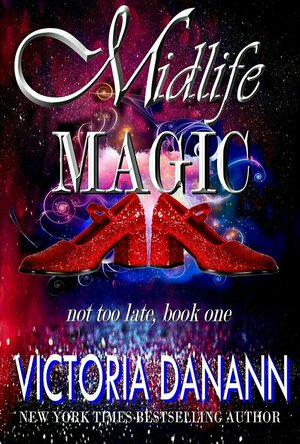
Midlife Magic (Not Too Late #1)
Book
FOR ALL THE EVERYDAY HEROINES OVER FORTY WHO KNOW IT'S NOT TOO LATE FOR MAGIC! If you can imagine...
Urban Fantasy Romance Series
